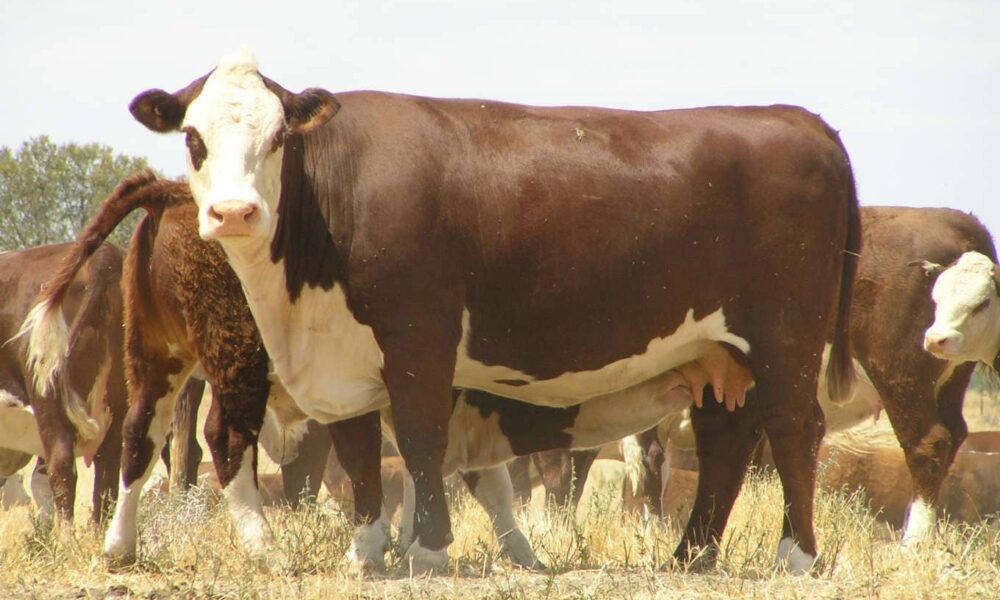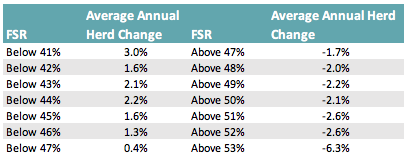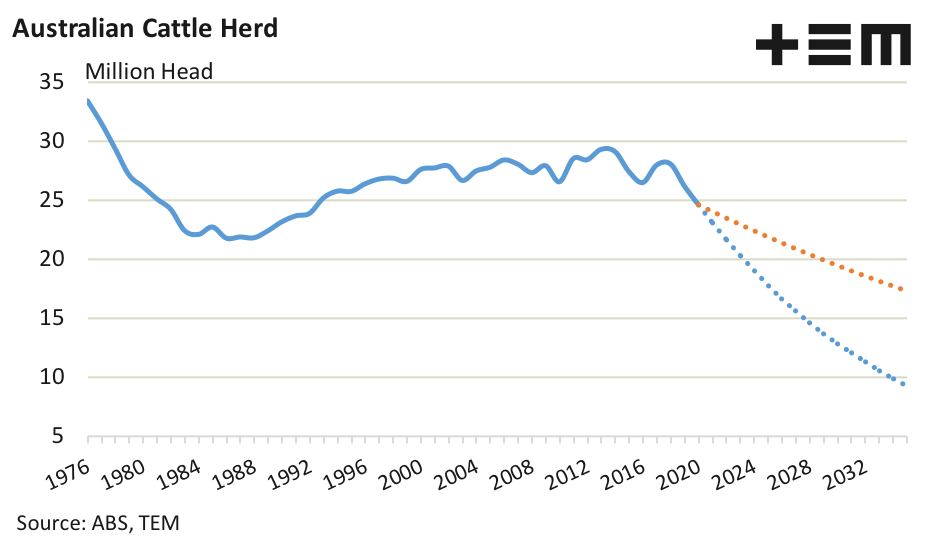Culling in the name of…

The Snapshot
- The current female slaughter ratio (FSR) is averaging 53.7% for the 2020 season, the second highest annual average on record.
- Analysis undertaken on the relationship between the FSR and annual herd change shows that FSR levels above 53.0% results in herd declines of more than 6.0% per annum.
- An FSR between 48% to 53% results in an average annual decline in the cattle herd of 2.3% per annum.
- Maintaining constant rates of herd decline of 2.3% for the next fifteen years (although unlikely) could see the cattle herd decrease to around 17 million head.
The Detail
The female slaughter ratio (FSR) measures the number of female cattle culled as a proportion of the total slaughter volumes within Australia. Currently, the FSR sits at an annual average level of 53.7% for the 2020 season. This is the second highest annual average FSR on record. In 2019 the annual average FSR hit an all time high of 56%, resulting in a decline in the cattle herd of 6% over the year.
Historic comparison of the annual average FSR to the annual change in the Australian cattle herd shows that there is a reasonably strong relationship between the FSR and what happens to the size of the herd. As a general rule, when the annual average FSR is above 47% we see a herd in liquidation. Meanwhile, an FSR below 47% often results in a herd rebuild.
Furthermore, taking a look at all years since the mid 1970’s we can see that, on average, when the FSR is further above 47% the rate of decline in the herd increases.
Indeed, when the FSR is above 48% the average annual herd decline comes in at 2.0%, but when the FSR increases to above 51% the rate of herd decline lifts to 2.6%.
Similarly, the further the FSR is below 47% the more the herd grows. For example, an FSR below 46% equates to an annual average herd rebuild of 1.3%, meanwhile an FSR under 41% results in an average herd rebuild of 3.0%.
Speaking in strictly theoretical mathematic terms (as it is unlikely to occur in reality) we can estimate what would happen to the Australian cattle herd if the FSR remained between 48% to 53% for the next fifteen years, assuming an annual rate of herd decline of 2.3%. Under this scenario we would see the herd reach 17 million head by 2035.
At risk of being too dramatic (but in the style of Mythbusters and taking our analysis to the absolute extreme), we can also outline the trajectory for the herd assuming an FSR remaining above 53% for the next fifteen years, with an associated annual decline in the herd averaging 6.3% per annum. This scenario would result in a herd below 10 million head by 2035.
It is important to note that neither of these scenarios are likely to eventuate. However, it does demonstrate the need to see the FSR moving lower in the coming months in order move back below the 47% threshold and maintain below this level in order to allow enough time for a herd rebuild to occur.




